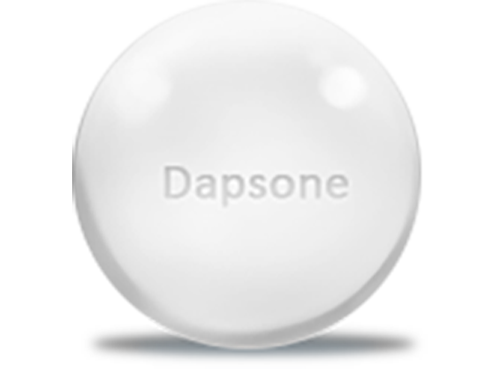Prednisone is a prescription corticosteroid used to treat a wide range of conditions involving inflammation or overactive immune responses — including arthritis, asthma, allergic reactions, and autoimmune disorders. It works by suppressing the immune system and reducing inflammatory signals throughout the body.
While it can be highly effective, prednisone must be used carefully due to potential side effects, especially with long-term treatment. This guide explains when it’s prescribed, how tapering works, and what to keep an eye on during use.
Product Description
Prednisone is a synthetic corticosteroid widely used to manage various inflammatory, allergic, and autoimmune conditions. It is commonly prescribed to treat rheumatic diseases, severe allergic reactions, leukemia, and chronic disorders affecting the musculoskeletal system. Prednisone contains prednisolone as its active ingredient, which helps suppress immune responses and control inflammation throughout the body. As part of the glucocorticosteroid group, this medication is often utilized when other treatments fail to provide relief. Patients using Prednisone should follow medical guidance closely to reduce the risk of side effects and ensure optimal therapeutic outcomes. Due to its potent anti-inflammatory properties, Prednisone remains one of the most effective treatments for controlling complex and long-term health conditions, particularly when inflammation plays a central role in disease progression. Treatment courses must be carefully managed to prevent dependency and minimize health risks during prolonged use.
Indications
Prednisone is prescribed for a variety of conditions that involve immune system overactivity and inflammation. Its common indications include Bechterew’s disease, inflammation of the spinal cord and membranes, non-infectious arthritis, edematous processes of the vertebrae, osteoarthritis, and pronounced spinal pain. Additionally, it is used for joint and nerve injuries of the spine, osteochondrosis, and cases where other medications have not provided sufficient relief. Beyond musculoskeletal disorders, Prednisone is sometimes recommended for managing hypertonic disease, Itenko-Cushing disease, nephritis, and certain forms of tuberculosis. Despite its wide application, careful evaluation is required before starting treatment, especially for patients with pre-existing conditions that may increase the risk of complications.
Dosage and Administration
Prednisone is administered orally and should be swallowed whole with a sufficient amount of water. The typical initial dosage ranges from 20 to 30 mg per day until noticeable improvement is achieved. After the patient’s condition stabilizes, the dosage is gradually reduced to a maintenance level of 5 to 10 mg per day. In severe cases, the daily dose may start at 50 to 100 mg before tapering. The maximum allowed daily dose is 100 mg, while a single dose should not exceed 15 mg. The course of treatment varies depending on the patient’s diagnosis and may last from one week to several months. Long-term use requires regular monitoring to minimize adverse effects and prevent withdrawal symptoms when discontinuing the medication.
Clinically reviewed | Based on current guidelines for systemic corticosteroid therapy in inflammatory and immune-related diseases.
Prednisone is available in tablets from 1mg to 50mg, and dosing depends heavily on the condition being treated. It’s often taken as part of a tapering plan to avoid adrenal suppression. Monitoring includes blood pressure, glucose, mood, and bone density in long-term use.
Safety Information
Prolonged use of Prednisone increases the risk of overdose, particularly if the dosage is not adjusted appropriately over time. Signs of overdose may include elevated blood pressure, fluid retention, and intensified side effects. In cases of acute overdose, immediate gastric lavage or induced vomiting is recommended. Chronic overdose should be managed by gradually reducing the dosage under medical supervision. Since no specific antidote exists, supportive care is essential. To preserve its effectiveness, Prednisone should be stored in a dry, light-protected place at a controlled temperature, away from moisture and direct sunlight. Patients are advised to follow their healthcare provider’s recommendations strictly to avoid potential health risks.
Contraindications
Prednisone is not recommended during pregnancy due to potential unpredictable effects on fetal development and should be avoided during breastfeeding. Use in children over the age of three is only permitted under strict medical supervision and in extreme cases. Patients with known allergies to Prednisone or its components should not take this medication. Contraindications also include active peptic ulcers, uncontrolled diabetes, severe osteoporosis, and adrenal insufficiency. Individuals with increased hair growth, menstrual cycle irregularities, and compromised bone health require careful monitoring during treatment. Alcohol consumption does not interfere with Prednisone’s effectiveness but should be limited due to overall health considerations.
Interaction with Other Substances
Prednisone may interact with a variety of medications, altering their effectiveness. It can reduce the efficiency of insulin, oral hypoglycemic agents, hypotensive drugs, and anticoagulants. Additionally, it lowers the concentration of salicylates and praziquantel in the bloodstream. Certain medications, such as rifampicin, phenytoin, and barbiturates, may weaken the effects of Prednisone, while hormonal contraceptives can enhance its potency. Patients should provide their healthcare provider with a full list of medications they are taking to prevent potential interactions and ensure safe, effective treatment.
Side Effects
Prednisone is associated with several potential side effects, which may vary depending on dosage and treatment duration. Common side effects include weight gain, increased bone fragility, excess hair growth in women, menstrual irregularities, digestive tract ulcers, elevated blood sugar levels, and sexual dysfunction. Long-term use can also lead to adrenal insufficiency, requiring gradual dose reduction to minimize withdrawal risks. If side effects become severe or persistent, patients should consult their healthcare provider immediately. Adjusting the dosage or discontinuing the medication may help alleviate symptoms and prevent further health complications. Symptomatic treatment may also be prescribed to manage unwanted reactions during therapy.
For related anti-inflammatory and immunomodulatory treatments, explore Arava or Methotrexate, which may be used in similar treatment plans depending on the diagnosis.








Reviews
There are no reviews yet.